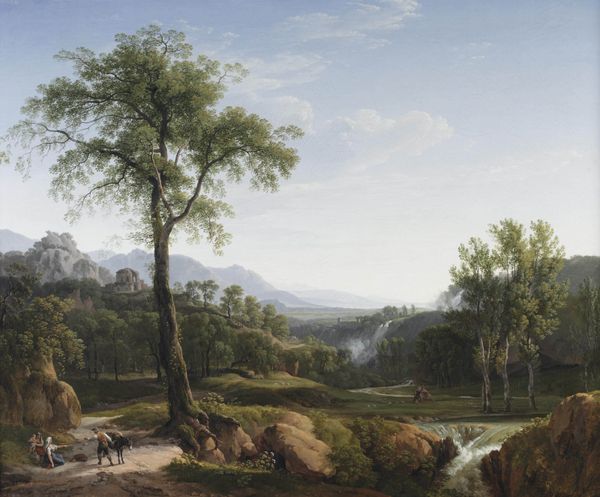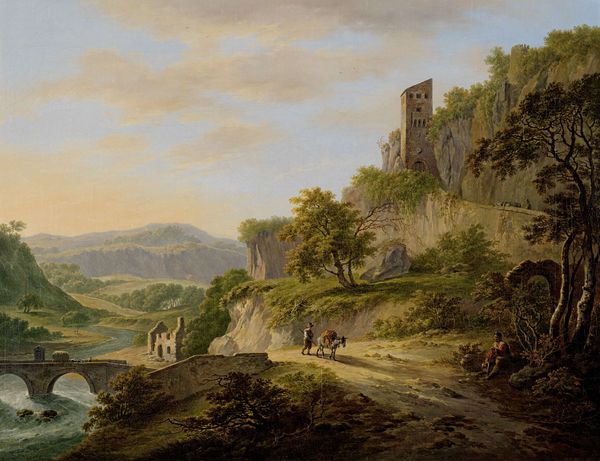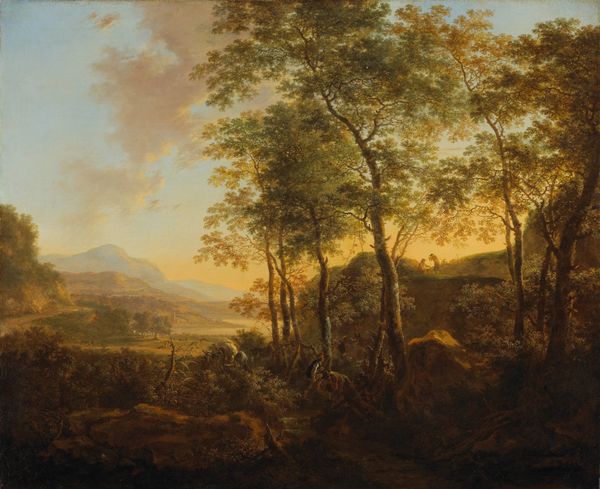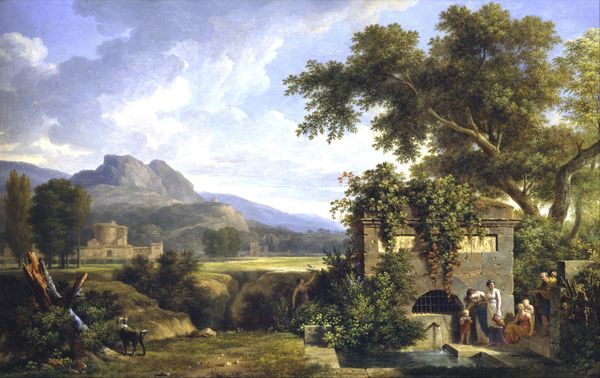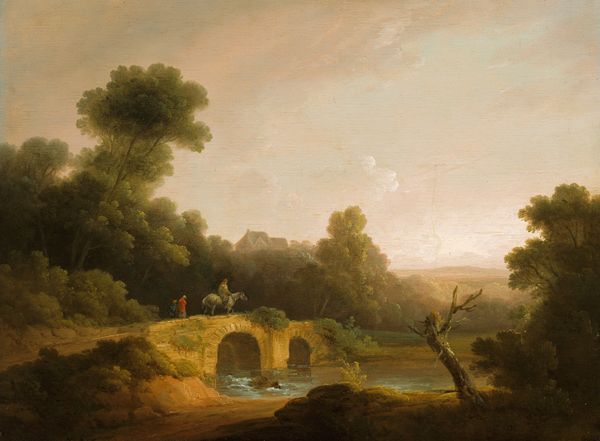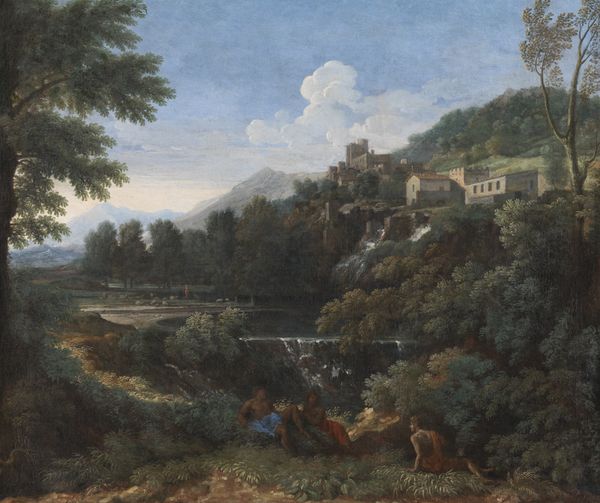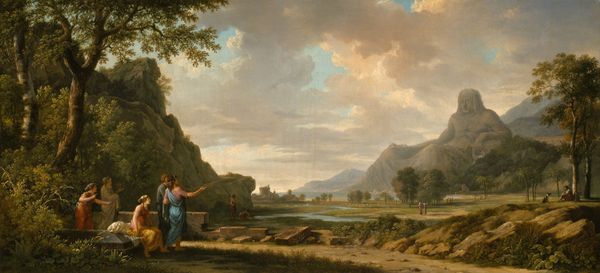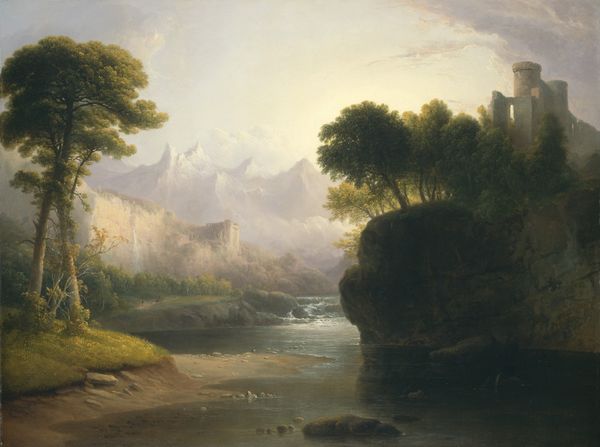
The Augustus Bridge over the River Nera, near the City of Narni, Italy 1790
0:00
0:00
jeanjosephxavierbidauld
Private Collection
plein-air, oil-paint, architecture
#
plein-air
#
oil-paint
#
landscape
#
oil painting
#
romanticism
#
arch
#
cityscape
#
history-painting
#
watercolor
#
architecture
#
realism
Copyright: Public domain
Editor: This oil painting, “The Augustus Bridge over the River Nera, near the City of Narni, Italy” by Jean-Joseph-Xavier Bidauld, created around 1790, really captures a sense of the picturesque, doesn't it? The ruins of the bridge juxtaposed with the everyday life of the people crossing is striking. What can you tell me about its historical significance? Curator: The "picturesque," as you say, is key. Consider how the ruin, a fragment of a grand Roman past, is presented not as a symbol of decay, but as an element in an idyllic, almost timeless landscape. Bidauld painted en plein-air, directly from nature, reflecting a growing interest in realistic representation but filtered through a classical lens. Why do you think he chose this specific view? Editor: Perhaps to highlight the contrast between past glory and present reality? The Roman bridge stands as a testament to a powerful empire, but it's now in ruins, coexisting with a simple rural scene. Curator: Exactly. It’s also important to note the growing interest in archeology at this time and how classical ruins became important and romantic symbols of Italian heritage. Think of the painting as a document reflecting both an artistic style and a social commentary of the era. Consider where these works were shown – typically in Salons – and the kind of audience that would be seeing this. Does this help clarify the painting’s purpose? Editor: It does. I was initially drawn to its aesthetic qualities, but understanding its historical context adds a layer of meaning. It makes me consider the role of art in constructing national identity. Curator: Precisely. And how images shape perceptions and narratives. This painting isn’t just a pretty landscape, it is actively contributing to a dialogue about the past and present. Editor: This has given me a fresh perspective on how to appreciate and analyze landscape paintings beyond their surface beauty. Thanks for your insight.
Comments
No comments
Be the first to comment and join the conversation on the ultimate creative platform.

